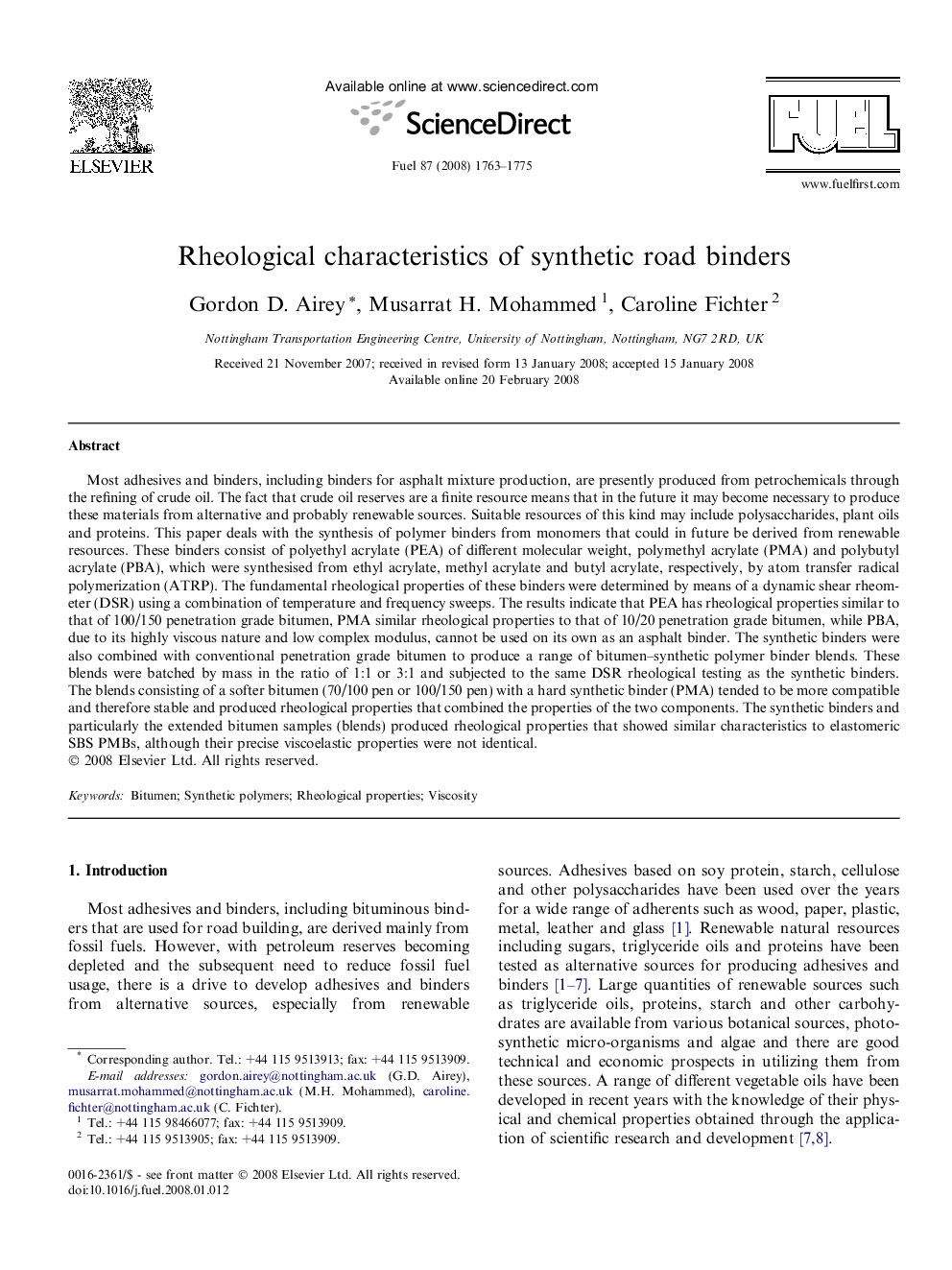| کد مقاله | کد نشریه | سال انتشار | مقاله انگلیسی | نسخه تمام متن |
|---|---|---|---|---|
| 208342 | 461248 | 2008 | 13 صفحه PDF | دانلود رایگان |

Most adhesives and binders, including binders for asphalt mixture production, are presently produced from petrochemicals through the refining of crude oil. The fact that crude oil reserves are a finite resource means that in the future it may become necessary to produce these materials from alternative and probably renewable sources. Suitable resources of this kind may include polysaccharides, plant oils and proteins. This paper deals with the synthesis of polymer binders from monomers that could in future be derived from renewable resources. These binders consist of polyethyl acrylate (PEA) of different molecular weight, polymethyl acrylate (PMA) and polybutyl acrylate (PBA), which were synthesised from ethyl acrylate, methyl acrylate and butyl acrylate, respectively, by atom transfer radical polymerization (ATRP). The fundamental rheological properties of these binders were determined by means of a dynamic shear rheometer (DSR) using a combination of temperature and frequency sweeps. The results indicate that PEA has rheological properties similar to that of 100/150 penetration grade bitumen, PMA similar rheological properties to that of 10/20 penetration grade bitumen, while PBA, due to its highly viscous nature and low complex modulus, cannot be used on its own as an asphalt binder. The synthetic binders were also combined with conventional penetration grade bitumen to produce a range of bitumen–synthetic polymer binder blends. These blends were batched by mass in the ratio of 1:1 or 3:1 and subjected to the same DSR rheological testing as the synthetic binders. The blends consisting of a softer bitumen (70/100 pen or 100/150 pen) with a hard synthetic binder (PMA) tended to be more compatible and therefore stable and produced rheological properties that combined the properties of the two components. The synthetic binders and particularly the extended bitumen samples (blends) produced rheological properties that showed similar characteristics to elastomeric SBS PMBs, although their precise viscoelastic properties were not identical.
Journal: Fuel - Volume 87, Issues 10–11, August 2008, Pages 1763–1775